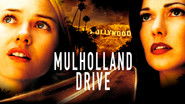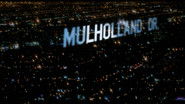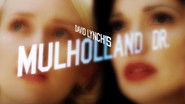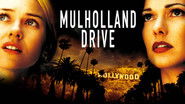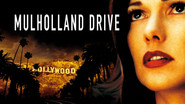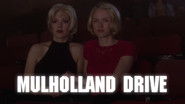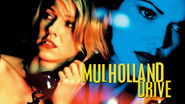michaeledward1212
David Lynch's Mulholland Dr. has been endlessly analyzed. From every color, object, background poster, and casting choice. It's a film where every shot has been scrutinized, and deservedly so. It's one of the few films that transcends the medium, becoming a moving piece of art. The plot and story winds and twists into darker and darker territory, much like the iconic Mulholland Dr. itself. Here are some of my interpretations:Diane Selwyn is a struggling actress in LA who has been romantically/sexually rejected by a rising starlet, Camilla Rhodes, who is currently starring in The Sylvia North Story, a 1960's throwback style movie including music numbers that is also starring Diane, in a smaller, thankless role. As a child, Diane suffered terrible abuse by the hands of an elderly couple, and was likely sexually abused by a different man. This abuse was extreme and fractured her personality into many parts. This phenomenon is known as DID (dissociative identity disorder) formerly known as multiple personality disorder. Diane takes out a hit on Camilla and the hitman tells her he will put a blue key behind the Winkie's diner when the act is completed. A man overhears this in the diner and sees Diane pay the hitman. In Diane's subconscious, this event fractures her personality further, and she cannot cope with the fact that she's done something so horrible. This fractures her personality further, and as a result an alter, or new persona appears in her subconscious, modeled after Camilla because Camilla is a symbol for what Diane has done, as she is the one who Diane took a hit out on. The alter is completely blank, as a result of the fact that Diane created it to avoid the truth of what she did. The alter is almost killed, but manages to escape, showing that Diane did want Camilla to escape the hit, and regrets her actions. Later, we see the man who overheard Diane's meeting with the hitman in Winkie's diner. He has had a horrible dream, and saw a man behind Winkie's. This is a reference to the fact that he not only saw what Diane did, but is also a part of what Diane feels guilty for. When he sees the hobo behind Winkie's in the iconic scene, the hobo represents the blue key and evidence of Camilla's death that Diane cannot deal with. He collapses and appears to be dead. This shows that the deed Diane committed is too ugly for her to face and survive for the long-term.Later, we meet Betty, another personality or alter that Diane has created. I believe that Betty was created when Diane experienced childhood abuse, as she idealizes the elderly couple who accompanies her, and dreams of being a Hollywood actress or movie star. I believe that Diane's wish to be a movie star is likely something that originated as a child and is shared with her alter Betty. Betty is a part of Diane but is much more emotionally stunted, optimistic and resilient. Betty is an idealized version of Diane, one who can cope with anything thrown her way, and is unaware or is okay with the abuse committed by the elderly couple.In Diane's subconscious, she sees many familiar faces because in dreams all of the faces we see are faces we have seen in real life. The two alters in Diane's subconscious cannot create "new" faces because anything Diane has seen they have also "seen" so anyone in her life is likely to appear to her alters as another identity. One such identity is Adam Kesher, who is directing The Sylvia North Story, and through mob manipulation is forced to cast a new actress of their choosing. And after refusing he continues to have one of the worst days imaginable. This is a part of Diane's subconscious that is mad at him for taking Camilla, so she is punishing him as a result. The fact that the casting of "Camilla Rhodes" (another blond who was recast for the subconscious portion of the movie) is something forced upon Adam, and him saying "this is the girl" parallels with Diane saying "this is the girl" when showing Camilla's photo to the hitman shows that Diane views the casting process as a violent process, much like taking a hit out on someone.The head of Hollywood sits behind a glass wall, and appears to be in charge of forcing Adam to recast "Camilla Rhodes" in The Sylvia North Story. Behind the glass wall a teal sofa is seen in the room with the head of Hollywood. Due to the color blue being of significance in this film, I believe the couch is Diane's subconscious projecting the casting couch into the head of Hollywood's glass containment. Diane likely believes Camilla slept with higher ups for the role in The Sylvia North Story in reality, or Diane was forced to do it to progress her fledgling career. Betty is trying out for a part in a movie separate from The Sylvia North Story and reads her script with a much older man for her audition. This is Diane's mind taking power from an abuser. Reframing it as a performance and using her brave, resilient, idealized alter of Betty to play out the scene, and this time, land the role and get the attention from Hollywood executives in the way Diane wishes she could. This audition leads her to the set of The Sylvia North Story, where she fantasizes about Adam Kesher being transfixed by her but ultimately choosing Camilla out of necessity. Both alters meet in Betty's aunt Ruth's home, where Betty discovers that Rita, (who names herself after seeing a Rita Hayworth poster) is unaware of who she is, and both are intrigued by the potential answers. They go to Winkie's diner and Rita notices that the name tag worn by the waitress, is actually her name. Rita remembers the name "Diane Selwyn" and pieces of the puzzle come together. When they arrive at the apartment of Diane Selwyn, a woman tells them that she is now living in her old apartment. There, the two discover a corpse, symbolizing Diane's suicidal tendencies, and likely Camilla's death. Rita panics, and the two are shown outside the apartment and they begin to merge. After this, Rita cuts her black hair, as parts of her identity are beginning to become clearer and she is beginning to merge with Diane's memories of her guilt. Betty puts Rita in a blond wig and the two look very similar, showing the lines between the two creations in Diane's mind beginning to blur further. The two alters are beginning to share experiences, and later have sex and Betty tells Rita how much she loves her. This process is showing the two parts of Diane become closer and more intertwined. Harsh realities from Diane's waking thoughts seem to be intruding on the alter's activities, and after they make love, Rita awakens from a nightmare saying silencio, and the two are soon seated in Club Silencio. Here, a magician tells them that their is no band, and the club fills with blue smoke, becoming a blue box of sorts. Here the alters listen to Rebekah Del Rio's rendition of Roy Orbison's "Crying" in Spanish. Both are brought to tears. Although they are aware that they are listening to a tape recording, they are still left emotionally wrecked by the performance. After Rebekah Del Rio collapses, Betty discovers a blue box in her purse, which matches a blue key Rita had in her purse when they initially met. When they arrive back at Aunt Ruth's they prepare to open the box, but Betty disappears. The two alters are now integrated into one, and once the blue box is opened by Rita, she is sucked into it and becomes apart of Diane's larger consciousness and personality. The blue box represents the gateway between consciousness and unconsciousness, and the next time we see it it is being held by the hobo seen behind Winkie's earlier in the film. The hobo drops it and memories of Diane's past actions and abuse come back to haunt her. The old couple seen at the airport with Betty are now images of terror for Diane, and the guilt and remorse overtakes her, leading her to commit suicide. As her face lands on the pillow smoke surrounds her bed, much like it did in Club Silencio to signify that we were watching an illusion, here it serves as a metatextual statement about how film is an illusion. After Diane is dead, her alters are seen in front of a backdrop of LA, and finally a blue-haired woman from the Club whispers "Silencio" and the film cuts to black.
Leray97
And here I thought Inception was the best dream related movie I've ever seen.. Mulholland Drive easily takes the cake given how the plot is structured. From a general standpoint, no other film has left such a lasting impact on me like Mulholland Drive; it's dreamlike story which also boasts some unique horror elements have not left my mind since I've watched it and probably won't ever do so, which I'm not entirely opposed to.Lynchian visuals are always going to be one of the highlights of any Lynch film. In this case, the way light bounces off figures in certain long takes/sequences along with the ambient music masterfully composed by Angelo Badalamenti created a very dreamlike atmosphere. Almost whimsical in a way, but definitely foreboding in other aspects. Speaking of dreams, its just so impressive how David Lynch is able to completely blur the line between dreams and reality in this movie. For a fair portion of the film we're given fragments of a story then led to believe and care for it up until we as the audience are taken by surprise and given another narrative. The specific plot elements Lynch chooses to flip are so unexpected and thus more appreciated as well. However much we accept or reject the "new" reality is ultimately up to us but in the end, Lynch's message is a bit more clear. A film director who has a very specific idea for a story and sticks to it all the way through is deserving of all the praise they can get, especially when done in a successful fashion such as Mulholland Drive.The two biggest schools of thought about films are that they should either be politically and/or socially significant in its portrayal of certain relevant ideas or that films should depict a "magical" world that the viewer can immerse themselves into for a while and think on the experience afterwards. I didn't watch Mulholland Drive much more than I felt it. It's hard to contextualize my ideas because not only do I have almost no idea about what I'm saying, Lynch seems to favor the style of film making that's aimed towards making the audience feel things upon losing themselves in Lynch's world. From him using cinema to dig into the audience's psyche, I'm not surprised that some people can dislike this movie just as others, myself included, will absolutely love it and the idea of it.












